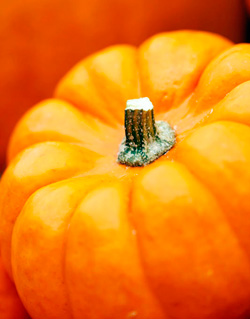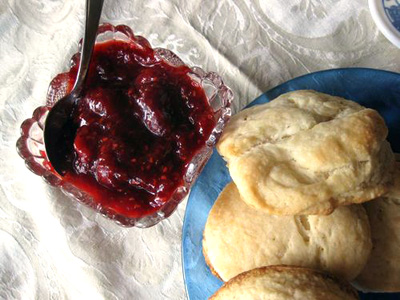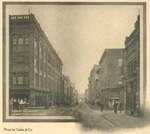 Pumpkin pie has been typecast. It always plays the same role: The Thanksgiving Day Dessert.
Pumpkin pie has been typecast. It always plays the same role: The Thanksgiving Day Dessert.
This is unfortunate because pumpkin pie has great range and versatility. In addition to being a great lead, it's a talented supporting player too. Think of the possibilities: pumpkin pie muffins, pumpkin pie cheesecake, and my favorite, pumpkin pie pudding.
Every year, weeks before Thanksgiving, I would anticipate my mom's pumpkin pie: a light, flaky crust filled with sweet, custardy, walnut studded, spiced pumpkin. The only thing better than a slice of her pie on Thanksgiving Day with a dollop of whipped cream was a slice of her pie the next morning for breakfast. To me, nothing beats chilled pumpkin pie.
So it wasn't unusual when one fall day a couple of years ago, I had a serious hankering for my mom's pumpkin pie that couldn't be satisfied. Sure, I could have called her for the recipe, but it never would have tasted as good, and buying one was out of the question. I reluctantly decided to make vanilla pudding with pumpkin pie spice instead. It was so good that the next time I made it, I added canned pumpkin and nuts. After several more experiments and many happy mouthfuls later, I present Pumpkin Pie Pudding with Candied Pecans and Whipped Cream.

 Even more than Thanksgiving, the day after is nostalgia squared, or maybe cubed. Memories rush back from the day before. The turkey. The perfect pies. Seeing loved ones, yet missing absent ones, and being thankful to have both. But now, layered on top, is a day of leftovers that are often better the day before.
Even more than Thanksgiving, the day after is nostalgia squared, or maybe cubed. Memories rush back from the day before. The turkey. The perfect pies. Seeing loved ones, yet missing absent ones, and being thankful to have both. But now, layered on top, is a day of leftovers that are often better the day before. My grandfather and several of my great uncles had a fur store in N.Y. It was called Windsor Furs (to indicate, one can only guess, a regal presence previously unknown to 14th Street and 7th Avenue). Uncle Simon and Uncle Harry kept Windsor Furs well into their 90’s. And I would like to tell you all the funny, memorable stories I know about them and the shop. But the thing that springs to mind at this moment is their business card.
My grandfather and several of my great uncles had a fur store in N.Y. It was called Windsor Furs (to indicate, one can only guess, a regal presence previously unknown to 14th Street and 7th Avenue). Uncle Simon and Uncle Harry kept Windsor Furs well into their 90’s. And I would like to tell you all the funny, memorable stories I know about them and the shop. But the thing that springs to mind at this moment is their business card.  In a Thanksgiving article Harper’s Bazaar published in 1900, the
author, Anna Wentworth Sears, recommends a jolly game of Pin The Head
On The Turkey. Rather than a tail and donkey, this requires a large
paper bird missing his noggin which, given the bill of fare, seems to
me not so jolly and also somewhat tragic. But that’s just me. She also
suggests, should this game grow tiresome, that ‘reciting Longfellow’s
poetry to music’ makes for swell after-dinner fun.
In a Thanksgiving article Harper’s Bazaar published in 1900, the
author, Anna Wentworth Sears, recommends a jolly game of Pin The Head
On The Turkey. Rather than a tail and donkey, this requires a large
paper bird missing his noggin which, given the bill of fare, seems to
me not so jolly and also somewhat tragic. But that’s just me. She also
suggests, should this game grow tiresome, that ‘reciting Longfellow’s
poetry to music’ makes for swell after-dinner fun.
 Francois Truffaut has been famously quoted about the process of making a movie being similar to a wagon train crossing the country. You start out the journey with high hopes and the spirit of adventure and halfway through, you just want to get there alive.
Francois Truffaut has been famously quoted about the process of making a movie being similar to a wagon train crossing the country. You start out the journey with high hopes and the spirit of adventure and halfway through, you just want to get there alive.